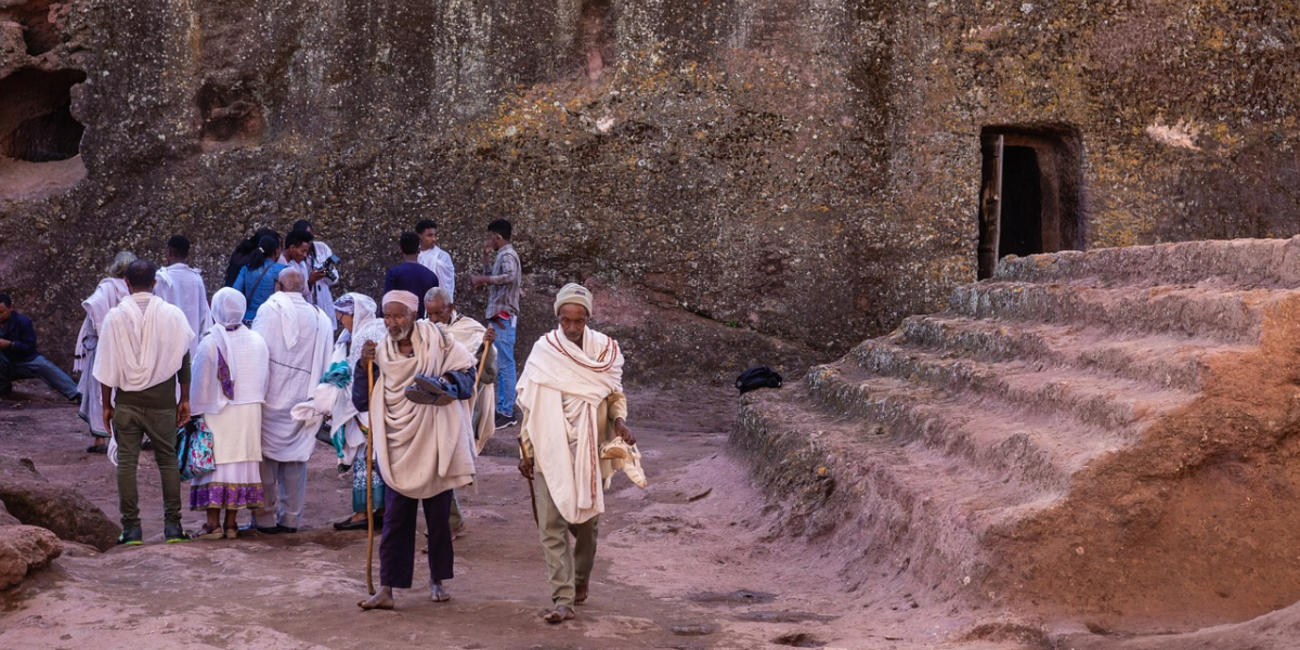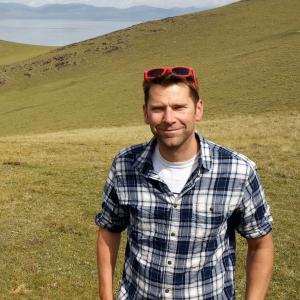Ethiopia is not usually the first place people consider for vacations, but it should be. Ethiopia rewards visitors with stunning scenery, great food, world-renowned coffee, fascinating history and much more.
Ethiopia bonus facts often include its incredibly diverse landscape, history, and culture. Additionally, there is so much to see and do you may need a second visit to explore the intricacies and beauties that make up Ethiopia. Wild Frontiers offers a selection of Ethiopian tours and explorations of this eclectic country. While you're here, check out these amazing facts on what Ethiopia is famous for (A to Z):
- Axum – this UNESCO city in Northern Ethiopia was the original capital of the kingdom of Axum and is famous for its obelisks, the tallest being 24.6 meters high, weighing 1,760 tonnes.
- Bale Mountains – this stunning mountain range in the south of Ethiopia is one of the best places to see the Ethiopian Wolf.

- Coffee – Ethiopia grows some of the world’s greatest coffee. Around 25% of the country’s population rely either directly or indirectly in the industry. Interestingly, coffee still grows wild in Ethiopia’s mountain forests.
- Danakil Depression – 100 meters below sea level, this arid area of lava-spitting volcanoes, multi-colored springs and salt plains was named the “cruelest place on earth” by National Geographic. The year-round average temperature is 95 degrees but temperatures of 145 degrees have been recorded. Here the Afar people use traditional methods such as camel caravans, pickaxes, and rope to mine the plentiful salt caused when the Red Sea flooded the region millennia ago. The heat can kill inexperienced workers, and camels have been known to be swallowed up by the ground after earthquakes. http://ngm.nationalgeographic.com/2012/01/afar-depression/morell-text.

- Emperor Haile Selassie – a defining figure in African history. The last emperor of Ethiopia ruled from 1930 until 1974, when he was overthrown by the Marxist dictator Mengitsu Haile Mariam. Haile Selassie traced his ancestry back to Menelik I, the child of the Queen of Sheba and King Solomon. Rastafarians regard Haile Selassie as the god of the black race. The lyrics to the Bob Marley song “War” are derived from a speech given by Haile Selassie to the United Nations in 1963.

- Fasilidas Pools – located close to Gondor’s castle in a beautiful and calm area surrounded by ancient banyan trees.
- Gheralta Lodge – one of Ethiopia's best-kept secrets and a firm favourite at Wild Frontiers. The lodge is set in the untouched wilderness of Northern Tigray, home to some of the region's finest rock-hewn churches. This 12-room lodge offers a wonderful balance of local charm and unpretentious comfort with fabulous Italian food, breathtaking views and a relaxed home from home vibe.
- The Hamer Tribe – this unique tribe lives in a fertile part of the Omo Valley, in the southwest of Ethiopia.
- Injera – this flatbread is the national dish of Ethiopia. It is often served with stew, where it is used to scoop up food with the right hand. It is eaten daily in pretty much every household in Ethiopia.
- Jazz – Ethiopia has an extremely diverse music scene. Traditionally, Ethiopian music is based on five notes, but over 40 years ago musician Mulatu Astatke began fusing the five tones with the 12 tones of jazz, and Ethio-Jazz was born. Today this form of music is widely popular both abroad as well as in Addis Ababa’s numerous jazz clubs.
- Key Afar Market – Key Afar is a small village in the south west of Ethiopia, home to the Banna tribe. In their weekly market, everything from grain and livestock to tribal jewellery and clothes are traded, and visitors are welcome to wander around and take in the atmosphere in this friendly and safe region.
- Lucy – one of Ethiopia’s most famous residents, Lucy was discovered in 1974 in Ethiopia’s Afar Depression. To the excitement of anthropologists the skeleton of this 3.2 million year old hominid was 40% complete, representing a major find and providing an invaluable insight into the evolution of modern humans. Lucy has a small skull capacity similar to that of apes, but an upright walk similar to humans, and despite being a fully-grown adult would have stood at just 3.5 feet tall and weighed four and a half stone. Lucy returned to Ethiopia in May 2013 after a number of years touring the US, and now resides in Addis Ababa.

- Mountains – the Simien Mountain range is one of Africa’s largest, consisting of over a dozen peaks over 4,000 meters tall.
- Nightlife – what often surprises visitors to Ethiopia most is the lively nightlife. There are a number of jazz clubs in Addis Ababa, such as the Coffee House. The Black Rose is a modern western lounge which attracts a mixture of locals, ex-pats and UN workers. On a night out you should try Tej, the local national drink which is fermented honey beer, or you could push the boat out and try the local version of grappa.
- Omo Valley – the remote Omo Valley is wild and little-visited, and home to some of Ethiopia’s most fascinating ethnic groups, such as the Banna, the Hamer, the Mursi, and the Surma. The Mursi live in an isolated part of southwestern Ethiopia, in the Omo Valley. It is still common for women to wear large pottery or wooden plates in their lower lips.

- People – Ethiopia has an incredible ethnic diversity, with over 83 languages being spoken and over 200 dialects.
- Queen of Sheba – legend has it that the Ethiopian Queen of Sheba once journeyed to Israel to visit King Solomon. There, the king promised not to take anything from her, as long as she didn’t take anything from him. The sneaky king left a glass of water by her bedside after serving her spicy food, and the queen awoke in the night to drink from it. In return, Solomon got what he wanted, and the Queen was soon on her way back to Ethiopia carrying his child, the future king Menelik. Menelik later visited his father in Israel, where he is said to have made off with the Ark of the Covenant, explaining its alleged location in Axum.
- Rock-Cut Churches – Lalibela’s rock-hewn churches are considered the finest early Christian architecture anywhere in the world, showing extraordinary skill in the use of line, proportion and decoration.

- Shoulder Dancing - in the northern parts of Ethiopia, Esketsa, meaning “dancing shoulders” is practised to a variety of war songs, love songs, hunting songs and shepherd songs.

- Timkat Festival (meaning baptism) – the Ethiopian Orthodox celebration of epiphany. During this colourful and noisy festival, a model of the Ark of the Covenant is paraded through the streets and priests spray revellers with baptised holy water.

- Unusual Calendar – Ethiopia continues to use the Julian calendar, dropped by the rest of the world in 1582. It consists of 13 months – 12 months of 30 days, and one of 5 days. New Year is celebrated on 11 September, and the country is 7 years behind Western time, meaning it is only 2006 currently!
- Volcanoes – Erta Ale volcano, in the Danikal Depression area, offers one of Ethiopia’s most memorable experiences. Here you can stand on the rim of one of Africa’s most active volcanoes and watch the molten lava changing shape, spitting and erupting, both during the day and at night, in what feels like looking at the beginning (or end) of the world.

- Wildlife – Ethiopia has a variety of unique wildlife, from the Gelada baboon (below), a species of old world monkey found in the highlands, to the Simien Fox.
- Xtraordinary Scenery
- Yeha – the temple of Yeha is the oldest standing structure in Ethiopia, dating back to the 7th century BC. The bronze age archaeological site shows evidence of contact with South Arabia.
- Zion Church – the Ethiopian orthodox St Mary’s of Zion Church, situated in Axum, is the country’s most important church, and claims to house the original Ark of the Covenant.
